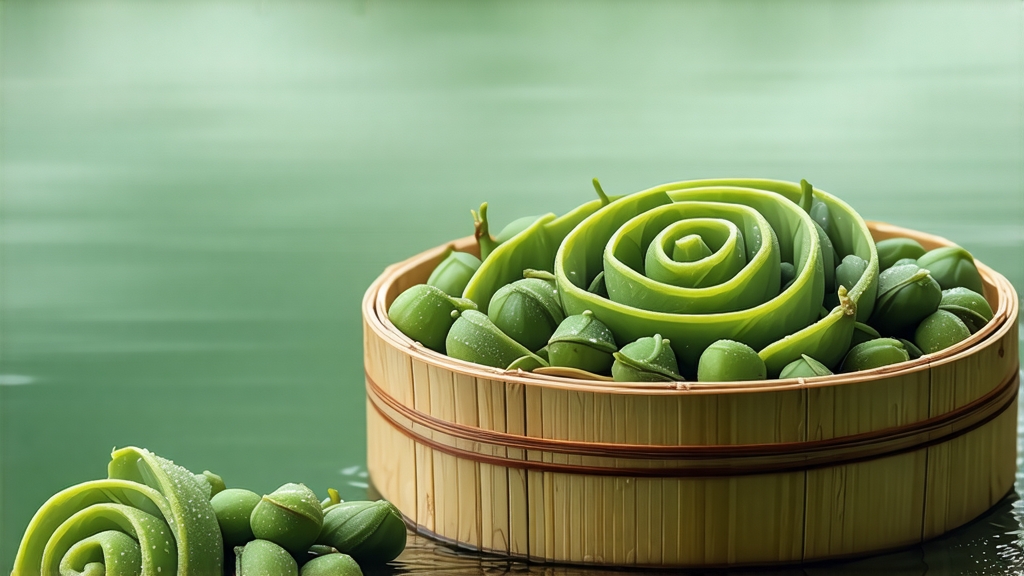
Among the jade-colored constellation of Chinese green teas, none carries the romance of a lakeside spring as vividly as Biluochun. Its very name—“Green Snail of Spring”—evokes the curled shape of a tiny mollusk and the season when the first mist lifts off Taihu, China’s third-largest freshwater lake. Foreign drinkers often meet it after Dragon Well or Mao Feng, yet once tasted, Biluochun lingers like a half-remembered poem: floral, fruity, almost weightless, but with a minerality that whispers of water and stone. To understand this tea is to step into a 1,200-year-old dialogue between monks, emperors, poets, and the cool, humid air of Jiangsu’s Dongting Mountain peninsula.
Legend dates the tea to the Tang dynasty, when a nun on Gusu’s peaks brewed wild leaves so fragrant that local farmers christened it “Xia Sha Ren Xiang”—“Scary Fragrance”—because its aroma startled them. The Kangxi Emperor, touring the region in 1699, found the name inelegant and rechristened it Biluochun, celebrating both its color and the spiral (luo) of each downy bud. Court annals record that 300 catties were rushed to Beijing each spring, wrapped in lotus leaves and clay jars to keep the lake’s cool breath alive. Today the original 1,600 mu of ancient gardens are a protected UNESCO site; seedlings descended from those trees are grafted onto sandy loam around the lake, but only leaves picked within the Xishan and Dongshan townships may legally bear the stamp “Lake Tai Authentic.”
Botanically, Biluochun belongs to the small-leaf Camellia sinensis var. sinensis, yet within that single cultivar exist micro-strains selected over centuries. “Seven-course fragrance” clones exhale peach, orchid, narcissus, lychee, magnolia, loquat and bay in successive waves; “early bird” bushes break dormancy two weeks before Qingming, yielding the rarest Mingqian grade. Farmers also keep scattered apricot, plum and loquat trees as aromatic companions; their roots interlock with tea bushes, and falling petals act as a natural mulch that sweetens the soil. Such biodiversity is not pastoral decoration—it concentrates amino acids, especially L-theanine, giving Biluochun its famed umami brothiness beneath the perfume.
Plucking begins at dawn when surface mist is still thick enough to obscure the far shore. Only the “sparrow’s tongue”—a bud plus the imminent unfolding leaf—is nipped sideways with the thumbnail to avoid bruising. Eight kilos of fresh tips will shrink to a single kilo of finished tea, and a seasoned picker gathers barely 600 g in a six-hour shift. Baskets are woven from green bamboo; plastic is taboo because it traps heat and “suffocates” the fragrance. Within two hours the harvest must reach the village workshop, where three concentric circles of charcoal fire await.
Kill-green is a ballet of heat and rest. Leaves are tossed onto a cast-iron wok pre-heated to 180 °C; palms flutter like moth wings for forty seconds, just long enough to rupture the epidermis without burning the down. Temperature drops to 120 °C as the master presses, rubs and rolls the mass along the wok’s wall, coaxting moisture to the surface. A tell-tale “popcorn” note signals the pivot point; at that instant the batch is lifted onto a straw mat to breathe. The cycle repeats three times, each roll tightening the spiral and locking in volatile aromatics. Final drying occurs over a wicker basket set 60 cm above glowing charcoal; the crafter kneads the leaves in a figure-eight motion until they feel “like wet silk slipping through fingers.” When a bud snaps cleanly and the down turns silver-white, the tea is done. From basket to sealed tin, no machine touches the leaf—only calloused hands and judgment passed from parent to child.
To brew Biluochun abroad, begin with transparency: a clear glass or thin porcelain gaiwan lets you watch the spiral unfurl like a time-lapse fern. Water should be 75–80 °C; hotter temperatures extract tannins that swamp the lilac note. For every 150 ml, use 3 g of leaf—about two heaping teaspoons. Pre-warm the vessel, then pour the water first and drop the tea onto it “upside-down,” a